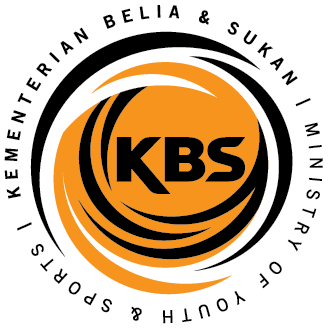By Datuk Ahmad Khusairi YAHAYA
The writer is Director of Policy, Planning and Research, MACC
The seriousness of the government in promoting integrity and preventing corruption among public officials clearly through the implementation of various policies and programs introduced over the last decade.
Among the corruption as one of the key areas highlighted in the Government Transformation Plan (GTP). To that end, a total of 27 initiatives have been and are being conducted in earnest through the National Key Result Areas or related NKRA Corruption.
What are the most critical factor in ensuring that the efforts to ensure the integrity of the public service, is not actually located on the seriousness of the government only. Seriousness should also come from the leadership of the government and demanded all the people to change.
In recent years, there are changes that can boast shown by the members of the civil service compared to a decade ago. In fact, the level of awareness of the integrity of public officials and anti-corruption spirit clearly increased. However, there is still much room for improvement to make it superior in the eyes of society.
According to statistics MACC during the nine years from 2003 to 2011, as a whole, the average catch of civil servants were 260 people a year. Compared to the overall number of civil servants in Malaysia was 1.4 million people, the percentage is too small at around 0.018 percent.
Although it looks small, but if left unchecked it could undermine the country. Public officials are seen to have power and this power if abused can lead to devastating effect.
The trend change towards a culture of integrity and anti-corruption among public officials is clearly noticeable beginning of 2009. There is a clear reduction in the number of arrests of civil servants compared to the catch on the private sector and the public. Campaign Against Corruption Whistleblower really make a big impact in the history of corruption in the country. Since its launch in 2009, the number of civil servants and private who was arrested for attempting to bribe public officials jumped so high. In 2009, for example, the number of arrests for MACC is a total of 500 people were arrested for attempting to bribe a total of 98 people. Jumped more than four times the total of 424 people in 2010 and 389 people in 2011. The number of bribes ranging from RM50 to the RM1 million.
The changes to MACC ACA in 2009 actually led to a change in approach and strategy for the prevention of corruption in the country. MACC sets three key areas of enforcement, procurement (quotations and public tenders) and government mega projects as the main focus.
Some of the disadvantages that have been hampering efforts to prevent corruption identified, among them the notion that the responsibility of fighting corruption rests solely MACC, lack of initiative public agencies to prevent corruption; internal control mechanisms are loose and imperfect and corruption is not considered a serious offense for disciplinary cases.
There are a handful of leaders who assume the task of preventing corruption is the responsibility of the MACC. Thus, a culture of integrity and prevention of corruption is not a major agenda. What is more important to maintain harmony and esprit de corps among the officers / staff. If the crackdown and anti-corruption culture to be effective then it supposedly will create an atmosphere of discomfort and suspicion of fellow members.
What is more regrettable is the attitude of mercy to offenders still be a fundamental consideration in the process of disciplinary action. For MACC investigation of a case does not just end with action exposes suspects to court alone. Conversely, many cases investigated by the MACC MACC report submitted to disciplinary action. However, on the basis of sympathy, the suspects have escaped severe punishment, such as termination and only given letters of reprimand or warning.
Statistics MACC during the past 10 years in relation to the disciplinary case clearly shows that 1,957 reports submitted to the Disciplinary Board of the Agency. Of these, only 60 cases of punishment of dismissal. In contrast, 979 or 50% bear a warning letter that does not pose any deterrent effect. This clearly shows that there are no serious cases involving criminal acts of corruption.
The main challenges that need to be improved to ensure the continuity of programs to enhance integrity and prevention of corruption in the public service is a strategic approach that involves two identified MACC which is to strengthen the entity’s internal control and strengthen public agencies MACC.
Thus, in the context of strengthening the entity’s internal control of public agencies, the Commission has proposed to the government to create an anti-corruption model in the form of internal controls through the establishment of the Integrity Unit in the ministries, federal and state departments.
The unit is the same as in the United States (US) and Taiwan. In the US it is more commonly known as the Inspector General Office (IGO). This unit was created in high-risk departments and fully responsible to monitor and carry out investigations on cases related to integrity, corruption and other crimes involving citizens of the respective agencies.
Taking the example of the US, integrity unit New York Police Department (NYPD) was established with a membership of 700 people to monitor 35,000 police officers in the NYPD that is 1:50, while the Port Authority of New York has a membership of 70 people to monitor 7,000 employees ie a ratio of 1: 100.
The idea on the establishment of the Integrity Unit in government agencies is welcome. Currently, four agencies have established these units, namely the Immigration Department, Royal Customs and Excise Department, Road Transport Department and MACC itself. MACC officers will be appointed and placed as Head of Integrity Unit at the agencies involved.
The changes to MACC status of ODA in 2009 is in line with major changes to workplace culture and MACC operating system as a whole. Starting with the MACC’s Strategic Plan 2011-2013, three major areas were strengthened, including the introduction of effective inquiry management system, management system and effective prevention and education and strengthening human capital development MACC thoroughly.
Transformation Executive Committee consisting of members of the MACC Advisory Board was established to drive the transformation process. The effects of the transformation process is clearly established in terms of improving MACC organizational structure, human capital management system based on competence, talent management system that is flexible and bring in highly specialized experts to improve the operations of the MACC.
Full article: http://ww1.utusan.com.my/utusan/Rencana/20120723/re_06/Cabaran-dalam-meningkatkan-integriti-penjawat-awam#ixzz42Zoi7u8g
© Utusan Melayu (M) Bhd





